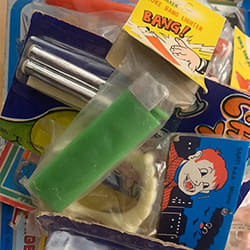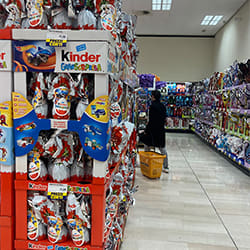In France they have the famous baguettes, in America we call them more generically rolls or buns but in Italy things are a tad more complicated.
I generally buy big loaves of bread or small buns when I need to make sandwiches but I’m always confused when I visit a bakery in Italy because I don’t know all the names of all the shapes and types of breads available and there are no tags explaining their names.
Despite that, local people seem to know exactly which bread is which.
Therefore I decided to learn something more about bread types, specifically about the ones here in Liguria because yes, there are regional differences also when it comes to bread.
I have learnt that some shapes of bread like rosette (lit. little roses) are common throughout the country, and I have found out that in Liguria the most common shape of bread all over the region is the Ciappa.
Ciappe (plural) are originally from the West coast of Liguria. They are made with wheat flour, and they are thin, golden in color, crunchy and tasty. In Ligurian dialect, Ciappa means flat stone as thin as a slate slab.
Then we find Canestrelli di Taggia. This is a bit trickier because Canestrelli are also powdered sugar covered biscuits in Liguria, but Canestrelli di Taggia are a salty baked product, in the shape of a canestrello biscuit, which is round, and usually has a diameter of about 10 centimeters. They are crunchy and slightly salty. They are very light and crispy thanks to the use of extra virgin olive oil made from the precious and local Taggiasca olives.
The most typical type of bread in Genoa city is the Libretto, which means booklet.
It has a rectangular shaped loaf with a cut in the middle that makes it look like a booklet. Given its rectangular and almost squared shape, it is ideal for sandwiches.
The Pan d’Ordiu, which I have never personally tried, is prepared with barley flour.
This bread has a hard consistency and a characteristic golden color.
It has a very old origin and, during the transhumance, this bread is typically soaked in water and then seasoned with tomato, basil, anchovies and other ingredients and served during the many festivals celebrating this period of migration of animals.
I have already talked at length about Farinata, chickpea or wheat flour flatbread and Focaccia in previous posts but I have never mentioned the Fazzino, a small, round, soft and tasty potato focaccia from Liguria. It is another example of how the union of simple and poor elements can create a tasty and substantial dish that has been able to overcome fashions unchanged.
It is excellent if cooked on the wood stove, as tradition dictates, and it’s hollow in the middle so it can be stuffed. Each village makes slight variations to the basic recipe, thus creating a product that changes in taste.
Small round focaccia breads are common all over Liguria. Some are made with potato, some with wheat flour and some others are made with corn flour. They are called Fugassette and they are cooked in testetti, clay pans that are heated over a fire. They are usually accompanied with cured meats, particularly with the Testa in cassetta (literally head in a box), a cold cut made with pig brains, fat, cartilage, pork rinds and laurel boiled, put in a mold and sliced.
I am a vegetarian so I have never tried the latter but I know that these focaccia breads are also often served with black cabbage.
Speaking of cabbage, an ingredient of humble origins, it’s worth mentioning that cabbage also accompanies a chestnut bread which, since ancient times, has been the most popular food for the poorest families.
Often referred to as ‘poor man's bread’, chestnuts buns have long represented an essential source of sustenance for the inhabitants of the hinterland in Liguria.

This remains for me just a big loaf of bread!





























































